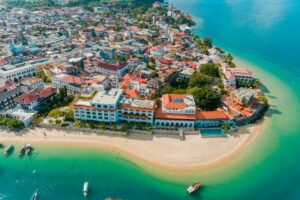Dar es Salaam. NMB Bank Plc’s corporate bond was yesterday listed at the London Stock Exchange (LSE).
NMB Bank revealed in a statement yesterday that its Jamii Bond was listed at the LSE’s International Securities Market and Sustainable Bond Market platform.
The cross-listing of US dollar-dominated three-year debt security took place during a market opening ceremony at the LSE’s International Securities Market and Sustainable Bond Market platform that is known for advancing climate-aligned, sustainable finance and green investments.
Last year, NMB Bank made a similar move when it started trading its gender-based instrument, the Jasiri Gender Bond, at the Luxembourg Stock Exchange.
The statement quotes the LSE CEO, Julia Hoggett as saying the cross-listing of the instrument marks a venue of choice for the bond’s first admission to trading outside Africa.
“This not only highlights NMB’s dedication to transparency and commitment to their sustainability objectives, but also showcases the continued international investor support that issuers across Africa can find in London,” said Ms Hoggett.
The bond, she said, empowers investors with the opportunity to make money while bettering lives and helping to protect Mother Nature.
The lender floated the dual-tranche NMB Jamii Bond last year to raise Sh75 billion in local currency and $10 million for financing social and green projects. The bonds had shoe options of Sh25 billion and $5 million.
Both tranches were, however, oversubscribed. While the Sh75 billion bond was oversubscribed by 284 percent to raise a total of Sh400 billion, the $10 million one ended up raising $160 million, representing an oversubscription of 730 percent.
Speaking on the cross-listing, NMB Bank CEO, Ms Ruth Zaipuna, who led NMB officials and other dignitaries to celebrate the significant development in the lender’s history, said the move enhances the bank’s credentials in global money markets and its visibility to the international investor community.
“Today’s listing of the Jamii Bond cements NMB Bank’s position as a trailblazer in sustainability within the African capital markets and now at a global stage,” she said during the event that was also attended by Tanzania’s High Commissioner to the UK, Ambassador Mbelwa Kairuki, and the British Minister of State in the Foreign, Commonwealth & Development Office, Mr Andrew Mitchell.
She said apart from giving the two bonds better visibility internationally, the offshore ventures also enable the bank to tap funds from a deeper pool of capital and wider investor base for financing enhancement of lives, transformation of communities and shaping a better future for all.
The Jamii Bond is the first tranche of NMB’s current 10-year Sh1 trillion (circa $385 million) multi-currency Medium-Term Note (MTN) Programme whose proceeds are being dedicated to support impactful projects such as renewable energy, sustainable water and waste water management, green buildings, food security, and employment generation.















